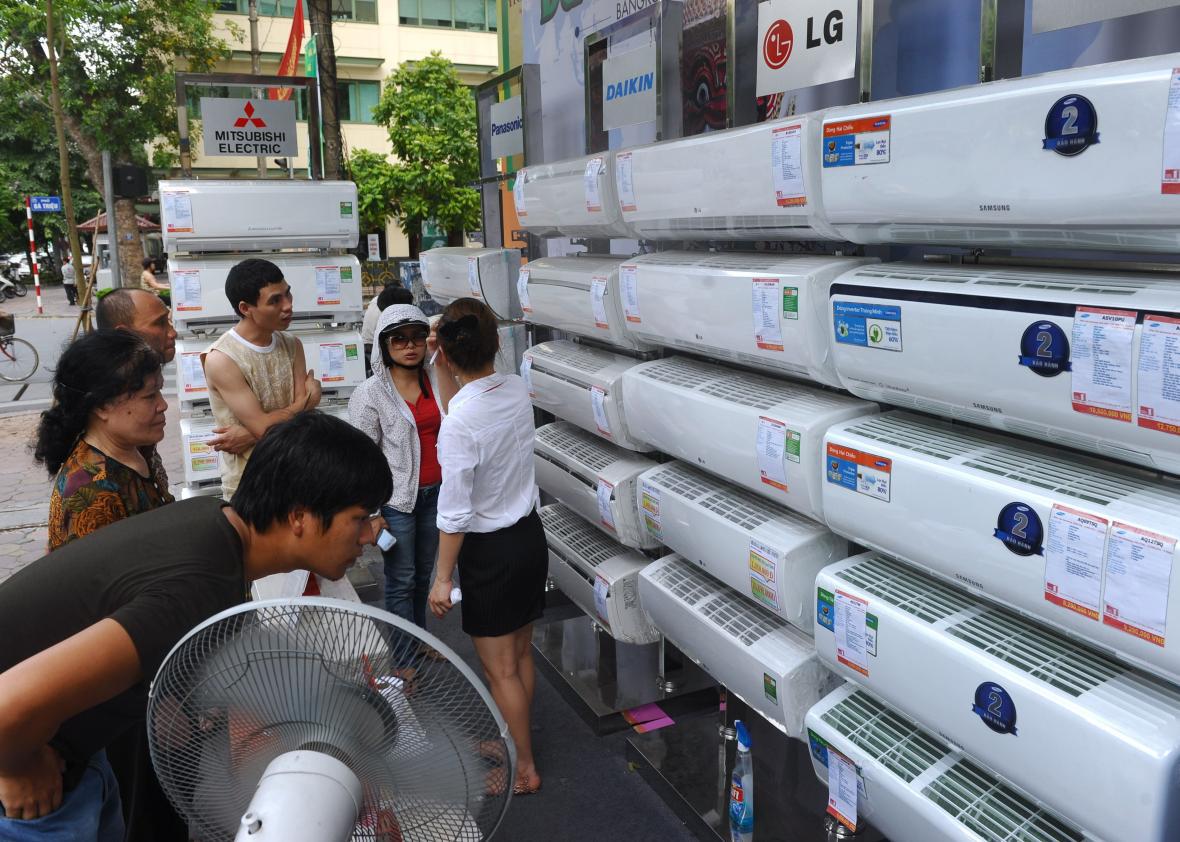An international agreement to limit the use of hydrofluocarbons (HFCs) was sealed in what government leaders and activists agreed marked a “monumental step forward,” as Secretary of State John Kerry put it.The deal was announced Saturday after all-night negotiations in Kigali, Rwanda.
Why is the agreement so important? Because HFCs can be as much as 10,000 times more powerful than carbon dioxide as greenhouse gases and limiting their use has long been seen as the fastest way to combat global warming. In fact, the agreement is so important that it will result in the “largest temperature reduction ever achieved by a single agreement,” said Durwood Zaelke, president of the Institute for Governance and Sustainable Development.
The use of HFCs has been soaring lately as economic growth in huge developing countries like India and China has led to an explosion in the use of air conditioning. HFCs are also used in refrigerators.
The agreement, which unlike the Paris agreement on climate change is actually legally binding, essentially divides the world’s countries into three separate groups with distinct deadlines to cut back on the use of HFCs. Under the deal, developed countries, including the United States would begin cutting back on HFCs in 2019. The other countries are divided into two groups that have 2024 (China, for example) or 2028 (India and Pakistan) as the deadline to begin gradually reducing the use of HFCs.
President Barack Obama praised the deal as “an ambitious and far-reaching solution to this looming crisis.” The latest global action to combat climate change demonstrates that “while diplomacy is never easy, we can work together to leave our children a planet that is safer, more prosperous, more secure, and more free than the one that was left for us,” Obama added.
